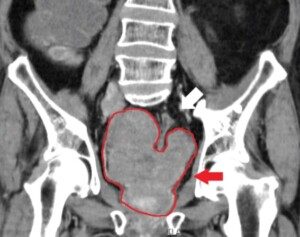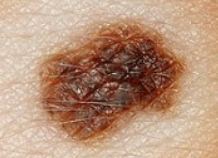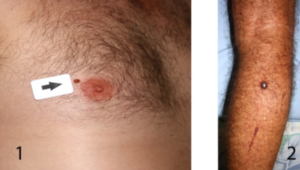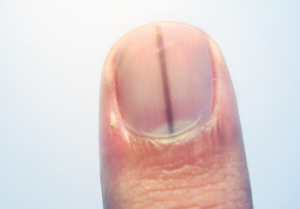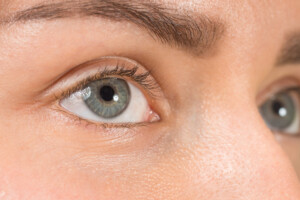The term “neurospicy” is a modern, playful and somewhat informal term that seemingly originated online but has expanded to in-person communication – about neurodiverse minds.
Neurospicy is often used to describe a person’s brain, thinking patterns or way of processing information in a non-traditional, unique or unconventional manner.
It’s obvious that this fairly recent term is a blend of “neuro,” referring to the brain in this case, and “spicy,” which adds a sense of zest, distinctiveness or edge to the description.
In fact, “neurozesty” is out there too, if you look hard enough for it.
Though to some people, neurozesty may sound more cool than neurospicy, the problem is that NeuroZesty is a brand of beer.
Neurospicy typically refers to ADHD, autism or having both conditions.
I used to think neurospicy referred to strictly autism – but a spicier presentation of this neurotype.
Thus, I saw myself as neurobland – someone whose autism is more of an internal experience than a visibly external, uninhibited presentation.
But in the current vernacular, neurospicy usually refers to any presentation of being on the Autism Spectrum or having ADHD.
The descriptor serves as a fun, often empowering way of embracing the quirks and uniqueness that come with being neurodivergent, without using the more clinical or potentially stigmatized terminology that might accompany a diagnosis.
Origin and Evolution of Neurospicy

©Lorra Garrick
It grew out of the neurodiversity movement, which emphasizes that neurological differences should be recognized and respected as a natural variation of the human experience, rather than as deficits or disorders that need to be “fixed.”
Nobody knows precisely where the term first popped up.
- A Twitter post?
- A Reddit post?
- Tumblr?
- Instagram?
The use of the word “spicy” is integral to its meaning.
The idea of something being “spicy” typically refers to it having a strong, bold or unexpected quality that sets it apart from the ordinary.
In the context of neurospicy, it humorously conveys the unpredictability, complexity and vibrancy of the neurodivergent experience.
It might evoke the image of a brain that functions in a way that’s unconventional or even “a little much” for some people (usually neurotypicals), but is ultimately enriching and interesting in its own right.
Implications of “Neurospicy”
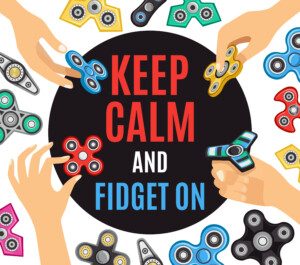
Freepik/macrovector
This descriptor allows for a more lighthearted, self-empowered approach to understanding how the brain works when it deviates from what’s often considered neurotypical or the standard way of thinking and seeing the world.
It gives Autistics and ADHD’ers another option – a cooler or more avant-garde or innovative choice – of referring to themselves.
For example, ADHD’ers might use “neurospicy” to describe their quick shifts in attention, high levels of energy and unique problem-solving methods.
Similarly, someone on the Autism Spectrum might use the term to describe their heightened sensory experiences, intense focus on specific interests or alternative communication methods.
It could also be used to hint at the tendency towards dramatic responses to sudden major changes in plans or a sensory overwhelm.
The word frames these traits in a positive light, elevating them from “deficits” to “flavors” that give a person’s brain a certain spiciness.
Neurospicy works to help destigmatize ADHD and ASD.
How “Neurospicy” Is Used
It’s actually a hashtag for TikTok. I wasn’t able to find it for Instagram, but there are Instagram accounts with neurospicy in their names.
In everyday conversations, especially on social media, people use neurospicy when talking about their experiences with ADHD, autism and even dyslexia or other neurodivergent forms.
It can also be used to build community. Many people with similar experiences might find solidarity in identifying as neurospicy.
I myself am not drawn to using neurospicy to refer to my autistic experience. This boils down to personal preference.
Plus, “neurospicy” is slightly ambiguous, as it could mean only ADHD, only ASD, AuDHD or perhaps in more uncommon interpretations, a stereotypical presentation of autism.
 Lorra Garrick is a former personal trainer certified by the American Council on Exercise. At Bally Total Fitness, where she was also a group fitness instructor, she trained clients of all ages for fat loss and maintaining it, muscle and strength building, fitness, and improved cardiovascular and overall health. She has a clinical diagnosis of ASD.
Lorra Garrick is a former personal trainer certified by the American Council on Exercise. At Bally Total Fitness, where she was also a group fitness instructor, she trained clients of all ages for fat loss and maintaining it, muscle and strength building, fitness, and improved cardiovascular and overall health. She has a clinical diagnosis of ASD.
.














